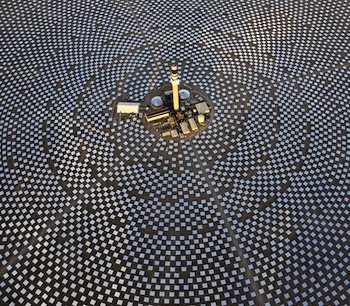 As a network operations engineer for close to 20 years, the times we dragged out the Manual Load Shedding Schedule, quaintly referred to as the ‘Ouija Board’, could be counted on the fingers of two hands.
As a network operations engineer for close to 20 years, the times we dragged out the Manual Load Shedding Schedule, quaintly referred to as the ‘Ouija Board’, could be counted on the fingers of two hands.
AEMO, or NEMMCO at the time, would issue an LOR1 (shedding possible) then escalate it to an LOR2 (shedding likely unless someone steps up to help), generally in response to a fault or two at large power stations.
Out came the board; call in the field crews to deal with cross-zone LV (low voltage) ties and the inevitable blown fuses; and brief the contact centre to be ready for calls. Then wait.
In Queensland and New South Wales, energy storage generally saved the shedding of ‘real’ load. With close to 600 Megawatts of water heating and other appliances on controlled load tariffs in Queensland, and a similar amount in New South Wales, dropping an amount of load that was similar to the capacity of a large power station generator kept us out of LOR3 (shedding) territory.
Water heating was very effective 15 years ago, when demand peaks were on a cool winter night. Now, dropping hot water load at 6pm on a 30 degree evening is nowhere near as effective. Demand management of air conditioning has a long way to go before it fills the shoes of water heating as a major source of stored energy, as do batteries.
But when shedding was necessary, there was no right answer. Is it better to drop 2 megawatts of residential load, thousands of homes where people are trying to cook dinner and go about their lives, over a handful of businesses ?
Shedding residential load also took out the streetlighting, with the associated traffic safety and security risks. Can we coerce the local hospital or telephone exchange to switch over to their local generation and come off the grid for an hour ?
Where do we have demand reduction arrangements with large customers who are willing to reduce their production for an hour in exchange for tariff benefit or payment ? The infrequent nature of load shedding generally meant these avenues were poorly explored, rarely tested and complex to initiate.
As the generation mix changes and the load profiles get peakier, the thinking around aggregated demand management must mature.
The fragmented market approach, where the beneficiaries of demand reduction are not aligned (think of retailers for the reduction in exposure to wholesale prices, networks for savings in capital investment for capacity, and large customers exposed to anytime demand tariffs), does not assist a coordinated and effective demand response. Regulators have tried through a number of mechanisms, with what must be considered as limited success.
It is clear that a renewed focus on intelligent demand control, underpinned by clear price and revenue signals, will have a major part to play in concert with the evolution of the generation mix.
Such a change will require support from governments in tariff reform, paradigm shifts in market design to share benefit and align objectives across market segments, and provide some reward for an enhanced risk appetite by network operators to be part of the solution.
For example, customer interruptions as a result of generation shortfall generally do not count against a distributor’s supply reliability targets and obligations.
Yet it’s the distributor and the retailer who can influence the marketing and price incentives for the uptake of discretionary load control, such as pool pumps, dishwashers, washing machines and larger commercial processes.
Establishing a robust Demand Management capability will not come cheaply. Given the cost of the alternatives, however, including perhaps $800M for a new interconnector to SA or the community cost of the lost load of an interruption, such a renewed approach must certainly be warranted.








